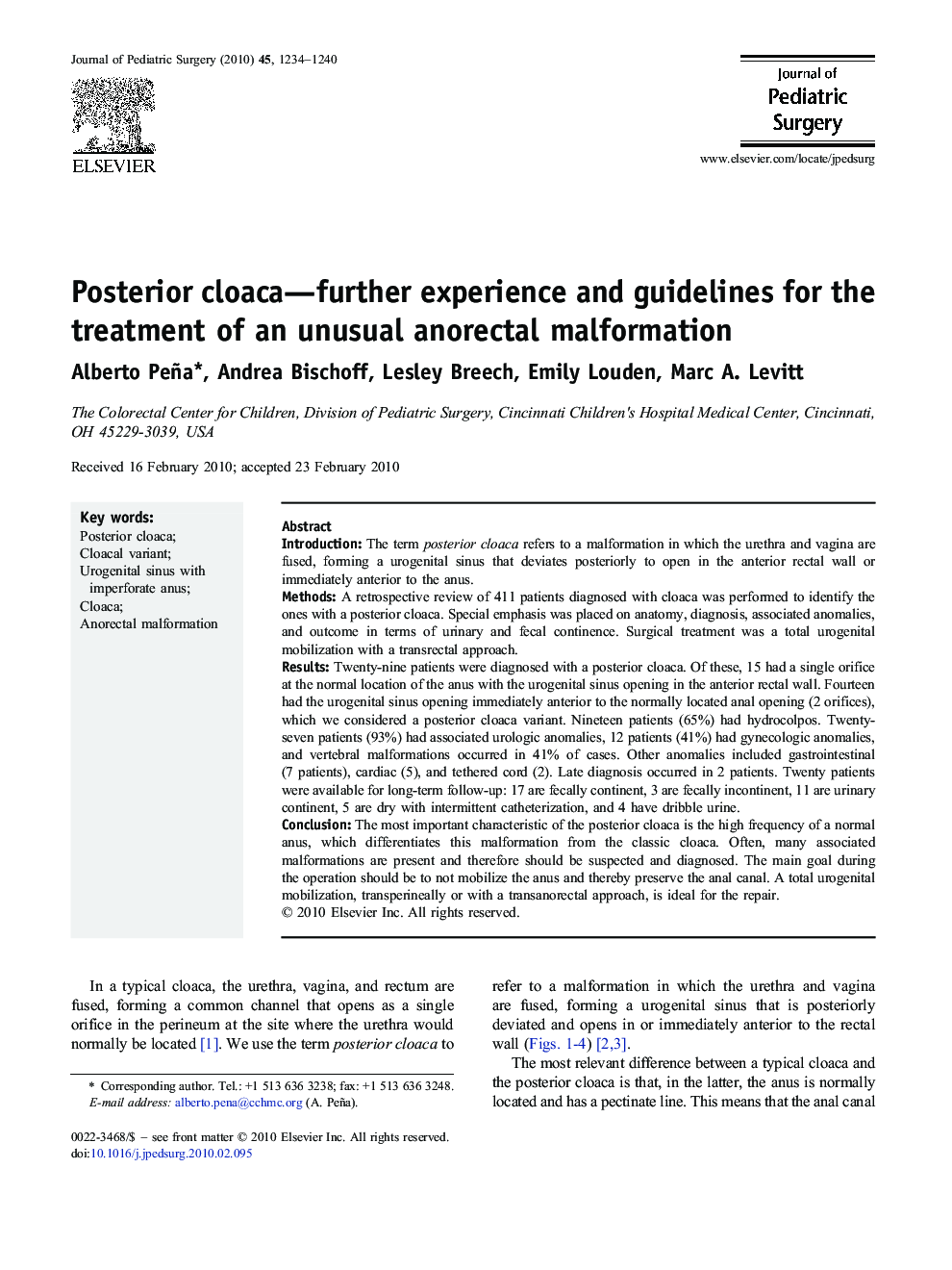| Article ID | Journal | Published Year | Pages | File Type |
|---|---|---|---|---|
| 4157505 | Journal of Pediatric Surgery | 2010 | 7 Pages |
IntroductionThe term posterior cloaca refers to a malformation in which the urethra and vagina are fused, forming a urogenital sinus that deviates posteriorly to open in the anterior rectal wall or immediately anterior to the anus.MethodsA retrospective review of 411 patients diagnosed with cloaca was performed to identify the ones with a posterior cloaca. Special emphasis was placed on anatomy, diagnosis, associated anomalies, and outcome in terms of urinary and fecal continence. Surgical treatment was a total urogenital mobilization with a transrectal approach.ResultsTwenty-nine patients were diagnosed with a posterior cloaca. Of these, 15 had a single orifice at the normal location of the anus with the urogenital sinus opening in the anterior rectal wall. Fourteen had the urogenital sinus opening immediately anterior to the normally located anal opening (2 orifices), which we considered a posterior cloaca variant. Nineteen patients (65%) had hydrocolpos. Twenty-seven patients (93%) had associated urologic anomalies, 12 patients (41%) had gynecologic anomalies, and vertebral malformations occurred in 41% of cases. Other anomalies included gastrointestinal (7 patients), cardiac (5), and tethered cord (2). Late diagnosis occurred in 2 patients. Twenty patients were available for long-term follow-up: 17 are fecally continent, 3 are fecally incontinent, 11 are urinary continent, 5 are dry with intermittent catheterization, and 4 have dribble urine.ConclusionThe most important characteristic of the posterior cloaca is the high frequency of a normal anus, which differentiates this malformation from the classic cloaca. Often, many associated malformations are present and therefore should be suspected and diagnosed. The main goal during the operation should be to not mobilize the anus and thereby preserve the anal canal. A total urogenital mobilization, transperineally or with a transanorectal approach, is ideal for the repair.
